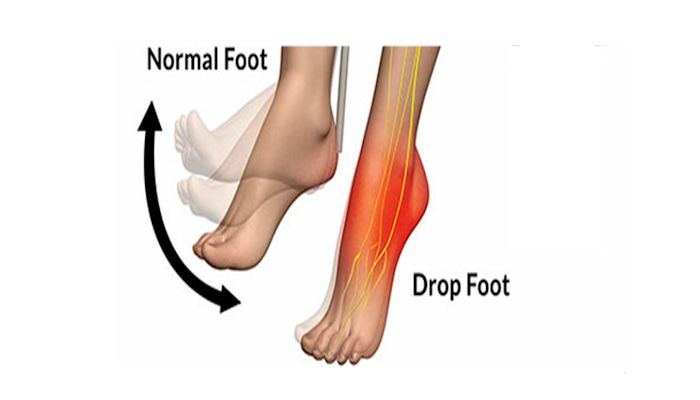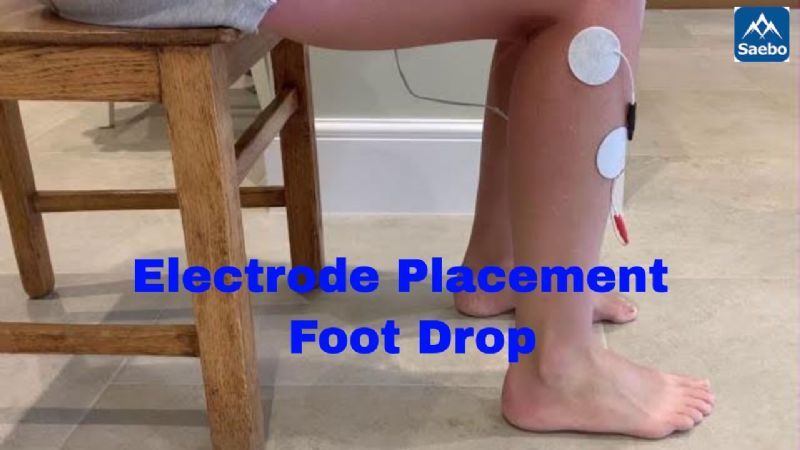 Written by Benjamin K. Mattox, DrPH, PA-C
Written by Benjamin K. Mattox, DrPH, PA-C
Foot drop is a common symptom caused by a number of different ailments, from brain injuries to muscular conditions, none the least of which is stroke. Currently, roughly 20% of stroke survivors experience foot drop, which can be a debilitating obstacle on the already difficult path to recovery. No matter the cause, treating foot drop is of the utmost importance when it comes to reclaiming independence - fortunately, we are here to help. Outlined below is a wealth of helpful information about foot drop and how to treat and prevent it, and be sure to check out the Stroke Recovery products for sale on the RehabMart to find products that can boost your recovery.
Foot drop is a simple name but its cause and cure may be less than simple.
If you are unable to lift your foot up at the ankle and it makes walking difficult, you may have something called foot drop. This could be due to weakness in one of the nerves that is responsible for the muscles involved with lifting (or dorsiflexing) your foot. It could also be caused by tightness or spasticity in the calf muscles of your leg that cause your toes to point downward.
The cause of foot drop can be from several different sources – nerve (or neurological), muscular, a side effect from medication, or a lack of movement.
People with stroke, multiple sclerosis, acquired brain injury, spinal cord injury, or cerebral palsy have a central neurological reason causing weakness, tightness, or spasticity. People with a peripheral neurologic disease may also have foot drop. These diagnoses could include neuropathy, injury to the lower spinal cord, nerve damage, or illnesses like Guillain-Barre syndrome.
Those who have a traumatic accident or muscular damage could also suffer from foot drop because of damage from swelling and compression.
Certain medications are known to potentially cause foot drop. Talk to your doctor about your medications.
Foot drop can also occur in people who are in bed for a prolonged amount of time. When lying on your back, gravity pulls down your foot; it can cause weakness and overstretch the muscles and nerves on the front of your lower leg.

If you or your loved one is required to be on bed rest or immobile, you can help to prevent foot drop by using a padded splint, by doing stretching, and by doing active exercises like ankle pumps.
If you have an underlying condition, it may be impossible to fully prevent foot drop from occurring. But often you can improve the flexibility and strength in your leg, or use an orthosis or splint to help maintain your foot in a position that will allow you to walk and move safely.

The treatment of foot drop depends on the cause and the symptoms you have. Below are some suggestions on what you can do, but make sure to talk to your doctor or therapist about the best treatment options for you.
Keep your foot and ankle flexible:
Improve the tone in your leg:
Strengthen your leg:
Improve the safety of your walking and prevent falls:
Prevent skin problems with the use of splints and orthotics:
Keep the rest of yourself healthy:

The biggest risk of not treating foot drop is tripping and falling. Falls lead to injury and other unnecessary treatments or hospitalizations. In order to clear your toes to avoid falling, you will have to change the way you walk. Over time, this could lead to pain or discomfort in your back or legs. Also, if your ankle loses flexibility and you cannot move it at all, then you may need surgery.
Most importantly, without treatment, you will have more difficulty doing the things in life that you enjoy doing. Unfortunately, there may be no cure, but there are things you can do to help improve the quality of your life.
If you have already been diagnosed or are concerned about your risk for foot drop, you should speak with your healthcare provider about what you can do to prevent and treat it.
As we’ve seen, the inconveniences and dangers that foot drop presents can be a difficult hurdle to clear during the recovery period from any number of muscular and neurological conditions, including stroke. We’ve introduced a number of possible treatment methods; not everything works for everybody, but hopefully, you can find something that improves your quality of life.
To find more information about strokes, visit Caregiver University: Stroke Recovery for a wealth of important information, including the Stroke Recovery 101 Guide. Additionally, check out our amazing Stroke Recovery products for sale.
Thanks for reading!
>> Shop Foot Drop <<
Benjamin K. Mattox, DrPH, PA-C
Orthopedic surgery physician assistant, doctor of public health, and owner of a public health consulting firm. With over a decade of Active Duty Navy Experience, Deployments with the Navy SEALS, and as a Professor for Purdue University - Dr. Mattox is a highly qualified and experienced clinician with a firm understanding of orthotic needs, rehabilitation, home access needs, gait therapy, and veteran-specific health needs.